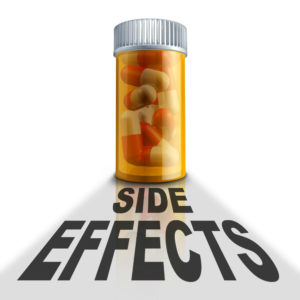A North Carolina man has filed a lawsuit against the makers of alleging the drug caused severe bleeding.
Plaintiff Nelson M. says was prescribed to him in June 2014. He claims he took the drug until December 2014, but was hospitalized on Dec. 11, 2014, for severe bleeding.
The bleeding lawsuit alleges that the bleeding was a reaction to the drug and resulted in additional medical bills as well as pain and suffering for the plaintiff.
“Plaintiff was caused to suffer serious and dangerous side effects including inter alia internal bleeding, as well as other severe and personal injuries, which are/were permanent and lasting in nature, physical pain and mental anguish, including diminished enjoyment of life,” states the bleeding lawsuit.
, also known as rivaroxaban, is used to “reduce the risk of stroke and systemic embolism in patients with non-valvular atrial fibrillation, to treat deep vein thrombosis (hereinafter referred to as ‘DVT’) and pulmonary embolism (hereinafter referred to as ‘PE’), to reduce the risk of recurrence of DVT and/or PE, and for prophylaxis of DVT for patients undergoing hip and knee replacement surgery,” the bleeding lawsuit claims.
The drug is manufactured and distributed by Janssen, Johnson & Johnson, and Bayer. According to the plaintiff, the drug makers failed to conduct appropriate research to identify the risks associated with .
Further, alleges the plaintiff, the drug makers also failed to warn patients and doctors about the risk of bleeding.
“Defendants negligently and improperly failed to perform sufficient tests, if any, on humans using during clinical trials, forcing Plaintiff, and Plaintiff’s physicians, hospitals, and/or the FDA, to rely on safety information that applies to other non-valvular atrial fibrillation treatment and DVT/PE treatment and prophylaxis, which does not entirely and/or necessarily apply to whatsoever,” alleges the bleeding lawsuit.
 The lawsuit contends that the drug makers compromised patient safety in order to market as more convenient than the safe alternative, warfarin. Use of warfarin requires blood monitoring, multiple daily doses, and diet modifications.
The lawsuit contends that the drug makers compromised patient safety in order to market as more convenient than the safe alternative, warfarin. Use of warfarin requires blood monitoring, multiple daily doses, and diet modifications.
Under the “ difference” marketing scheme, the drug was not supposed to require those efforts on the part of the patient.
However, the bleeding lawsuit claims the marketing scheme was based on flawed science.
Studies showed that patients did better on if they monitored their blood and took doses over the day, rather than in a single dose, says the plaintiff.
“Importantly, there is no antidote to , unlike warfarin,” points out the bleeding lawsuit. “Therefore, in the event of hemorrhagic complications, there is no available reversal agent. The original U.S. label approved when the drug was first marketed in the U.S. did not contain a warning regarding the lack of antidote, but instead only mentioned this important fact in the over dosage section.”
The plaintiff alleges that the drug makers’ distribution and marketing of was negligent, fraudulent, and failed to protect patients and their loved ones from significant risks associated with the drug. The plaintiff is seeking damages for personal injury, medical expenses and other economic harm.
If you or a loved one suffered bleeding, contract the attorneys at McDonald Worley for a free case evaluation.
